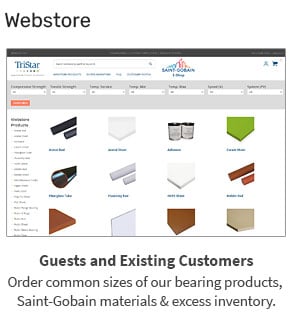
We’ve had many questions about the connection between PTFE materials and high-radiation environments. Often, when working in these conditions, engineers turn to fluoropolymers like Tefzel (ETFE) as a preferred material instead of PTFE. But before you make a final material decision, let’s review some key facts about PTFE in this environment.
PTFE has never been recognized for its performance in high radiation environments, as it tends to degrade. But it also can gain some favorable material properties in certain applications. Explore more on the crystallinity of PTFE.
Consider:
1. Threshold
When PTFE is exposed to radiation in air, it’s damage threshold is 2-7 x 104
2. Strength
At these exposure levels, PTFE will lose 50% of its tensile strength. At 7 x 104 it loses nearly all of its elongation, flex and impact properties.
3. Vacuum
When PTFE is exposed to radiation in vacuum, the properties are up to 10x better in terms of tensile, elongation, flex and impact values.
4. Applications
In space applications (which are in vacuum conditions), PTFE can survive service in satellites that may encounter radiation exposures in the Van Allen belt, which is about 10rads per hour. Depending on the other conditions, a PTFE component could survive 5-50 years in earth’s orbit.
5. Alternate materials
- FEP, another type of fluoropolymer, has a radiation tolerance 10-100 times better than PTFE in air, so it’s an option in many earthbound radiation exposures. However, Tefzel would still be our material of choice.
- Rulon materials are NASA-approved for satellite service in seals and bearings aboard geosynchronous satellites and deep space probes because the material does not outgas in vacuum and is more tolerant to radiation.
If you have applications where a fluoropolymer seal, bearing, gasket or structural component may be under consideration contact TriStar Engineering to discuss your options. We’ll help you compare materials for the best option.









